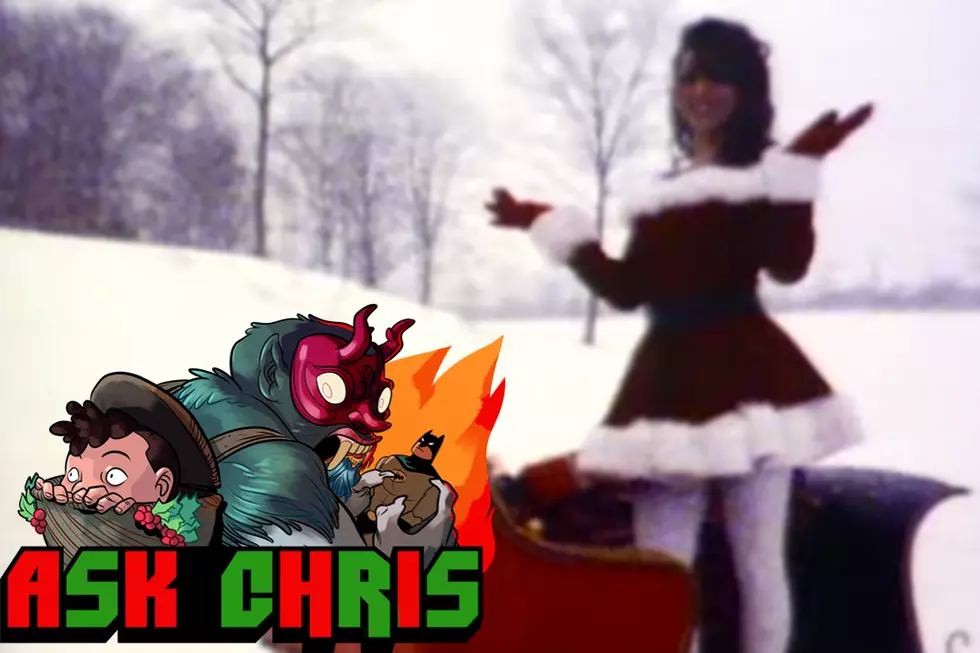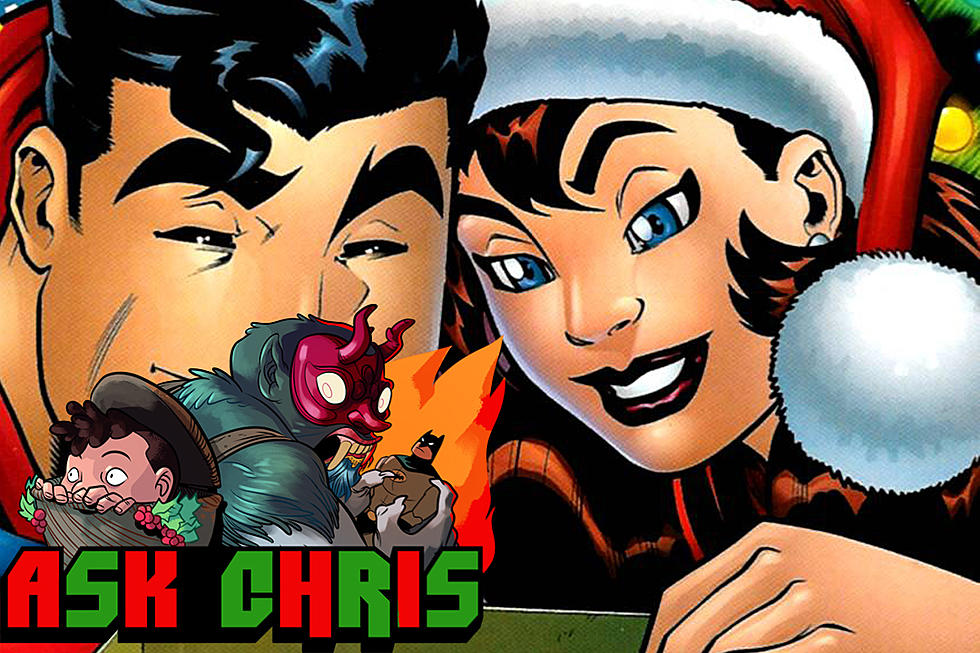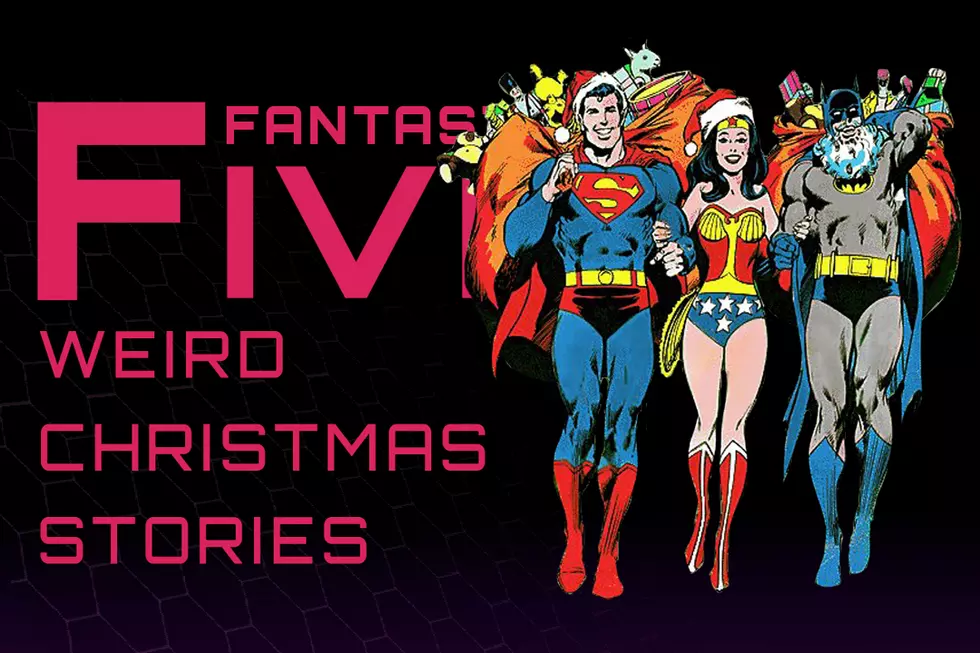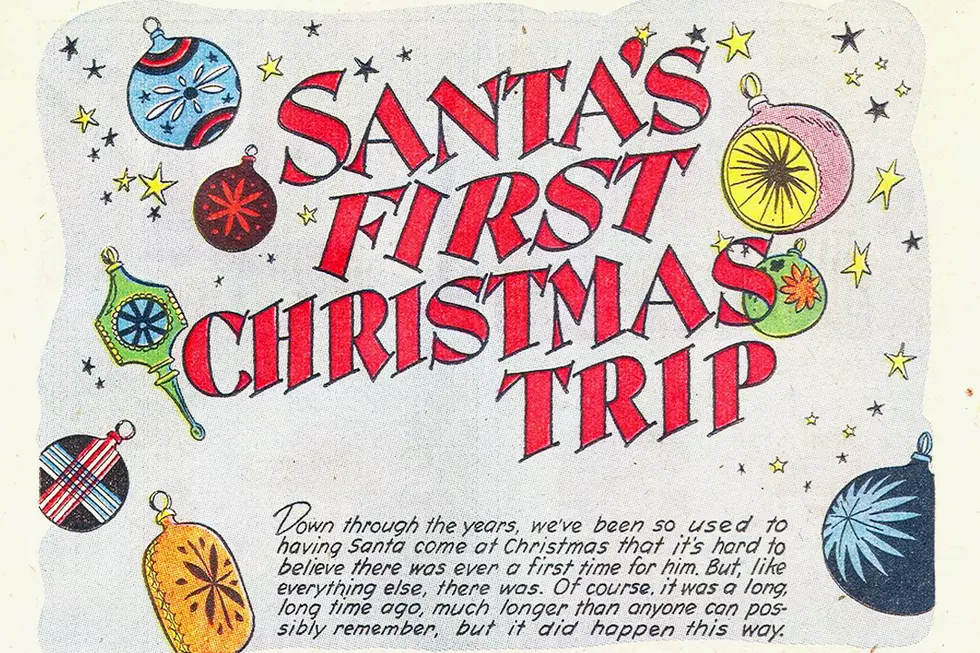
Ask Chris #225: The Secret Origin Of Santa Claus
Q: Merry Ask Chris-tmas! What's the weirdest version of the Santa Claus origin story? -- @prograpslady
A: You know, it wasn't that long ago that I wrote about two different version of Santa's origin that were done as stop-motion TV specials from Rankin-Bass, and as much as I love them both, they're not exactly what you'd really expect. I mean, Santa Claus Is Coming To Town is essentially the story of a revolutionary who brings down a corrupt European government through illegal toymaking and is then hunted until he has to relocate to the North Pole, and The Life And Adventures of Santa Claus has him raised on the milk of a lioness and taught about Japanese samurai by a twelve foot tall druid who shot laser beams from a silver axe in a war against child-hating goblins.
I guess what I'm getting at here is that even for someone who's spent a lifetime getting used to origin stories with nonsense words like "bitten by a radioactive spider" and "inhaled hard water fumes," Santa's beginnings are pretty weird.
It's not just the TV specials that do it, either. You see it in books like William Joyce's Nicholas St. North and the Battle of the Nightmare King, where a young Santa is a swashbuckling raider who seems a lot like a young Conan but with a heavier coat and an army of yetis (which is actually pretty great). Movies, too, like the bizarre and astonishingly terrible Santa Claus: The Movie, which was, incidentally, brought to you by the producers of Superman: The Movie. That's a film that straight up opens with Santa Claus and his wife dying of exposure in the snow and then waking up inside a workshop full of elves that are already making toys for no particular reason, and folks, that's the most sense that movie ever makes. Then there's The Santa Clause, which also opens with Santa dying and then revealing that he's actually a string of different Santas who have all presumably murdered their predecessor like a shockingly jolly assassin's guild, a premise that people apparently thought was a good enough idea that they made several movies about this.
Even if you're looking at it from a strictly liturgical point of view, St. Nicholas of Myra was a dude who was best known for punching a man in the mouth for heresy in front of the emperor of Rome and then escaping from jail with the aid of Jesus and Mary and going on to become the patron saint of pirates. Really, no matter where you're coming at it, you're going to run headlong into a wall of pretty weird stuff that doesn't really seem like it has much to do with handing out Nintendos on Christmas morning.
Knowing that, you might expect the weirdness to hit critical mass once Santa Claus started showing up in comics, and you'd be right... sort of. See, the weirdest thing about Santa's comic book origin isn't what happens in it, but how rarely we get to see it.
Superhero comics are, after all, obsessively fixated on origin stories. I've seen Krypton explode and the Waynes get murdered more times than I've seen the bottom of a coffee cup. Since Santa has appeared in so many comics, even headlining a couple of books over the years, you'd probably think they would've gone as in-depth as they possibly could chronicling his early days, right? I mean, Santa Claus: Year One is a title that pretty much sells itself.
And yet, that's not really how it goes. To my knowledge, there haven't been a whole lot of comics about who Santa Claus is and How He Came To Be. I even enlisted the help of noted Santa Clausologist Benito Cereno, and the only story that he could find that was even close was a story by Walt Kelly in an issue of Santa Claus Funnies from 1944 that told the origin story of Santa's clothes.
In case you're wondering, the origin story of Santa's clothes is that some elves made them and then told him he looked good in red and should never wear anything else, so he didn't. It's kind of a letdown, even with the knowledge that the clothes were made out of a giant's shirt-tail.
It's worth noting that this story also refers to Santa's helpers as "gnomes," alleges that Elves only get clothes on Christmas and spend the rest of their time naked, and asserts that Santa Claus has been delivering toys on Christmas Eve for twenty-five thousand years, so I think we can all agree that it is dubious at best when it comes to Santa Canon.
Most superhero comics tend to just take Santa's existence as a given that doesn't really need to be explained, and there's a level where that makes sense. I mean, there's a pretty good chance that you're already pretty familiar with who he is and what he does -- North Pole, reindeer, presents, extremely specific laughter, etc. -- so it's not like they really need to go into it, especially if he's just showing up as a guest in a Superman story.
But while we don't really get much of an origin story for the person, comics do have a weird fixation on providing an origin for the concept.
The weirdest of these by far is an issue of Batman: The Brave and the Bold from 2009. I wrote about it last year, but the gist of it is that it opens with the Earth exploding on Christmas Eve, and Batman and Adam Strange having to rebuild reality in an antimatter chamber that warps their very physical forms and sends psychic impressions of them rippling backwards through time:
That story is both amazing and completely bananas, and probably has the title of Weirdest Christmas Comic Ever on lock. At least, it certainly does for contenders published in the 21st Century. It'd have a hard time beating out that one Simon and Kirby story where the Sandman has to go rescue Santa Claus from being kidnapped by the Seal-Men because he has been giving them useless presents. Then again, that story never explained that Christmas elves were actually just our minds interpreting a scrunched-up, curly-toed Batman, so... Let's call that one a tie.
If anything could give them a run for their money, though, it's another strange origin story for the concept of Santa Claus by Tom DeFalco and Sal Buscema that ran in the pages of 1991's Marvel Holiday Special, which mostly revolves around an evil goblin wizard's attempt to destroy Asgard by dropping an asteroid on it.
Bear with me, it'll get Christmassy in a second.
This is Grylack the Terrible, and his arrival to threaten Asgard with meteoric destruction interrupts a prayer that Odin is receiving from a young lady named Sia, whose husband Sigurd is caught up in a storm as he returns to his village with supplies for them to survive the harsh Norse winter. It's, uh, probably for the best if we don't think about where he actually got those supplies and whether or not it involved any helpless villagers being murdered with greatswords. That's... that's not really in the spirit of the holiday.
Anyway, while Thor is more than willing to just beat Grylack to death with a hammer right then and there in the middle of the throne room, Odin tells him to hold off. Is this a bit of mercy inspired by the forgiveness that's so central to the message of Christmas? Is Grylack, perhaps, a Viking version of the Grinch, whose heart will grow by three sizes by the end of this story when the Asgardians offer him a hand of friendship rather than shunning him and keeping him confined to the darkness?
No. Listen, he's still going to get beaten to death with a hammer. Just not right now.
See, Odin, in his one-eyed wisdom, has figured out how to hit two birds with one magically enchanted Uru mallet. First, he has Thor load up a selection of Asgard's finest food, clothing and other assorted gifts into a cart pulled by Thor's flying goats, Toothgnasher and Toothgrinder, and then sends out Thor to deal with the Grylack and his asteroid at a very specific time:
The explosion of the asteroid creates a bright light shining in the heavens that guides Sigurd home, while Odin himself sneaks into Sia's house and leaves a cartload of presents for her, then rides off into the night:
And that is apparently how the Marvel Universe got Santa Claus. Maybe not as weird as being a psychic impression of a cosmically altered Adam Strange, but still, most Christmas stories I read growing up did not involve Goblins getting bludgeoned to death with blunt objects.
Well, except those letters Tolkien wrote to his kids.
Ask Chris art by Erica Henderson. If you’ve got a question you’d like to see Chris tackle in a future column, just send it to @theisb on Twitter with the hashtag #AskChris.
More From ComicsAlliance









